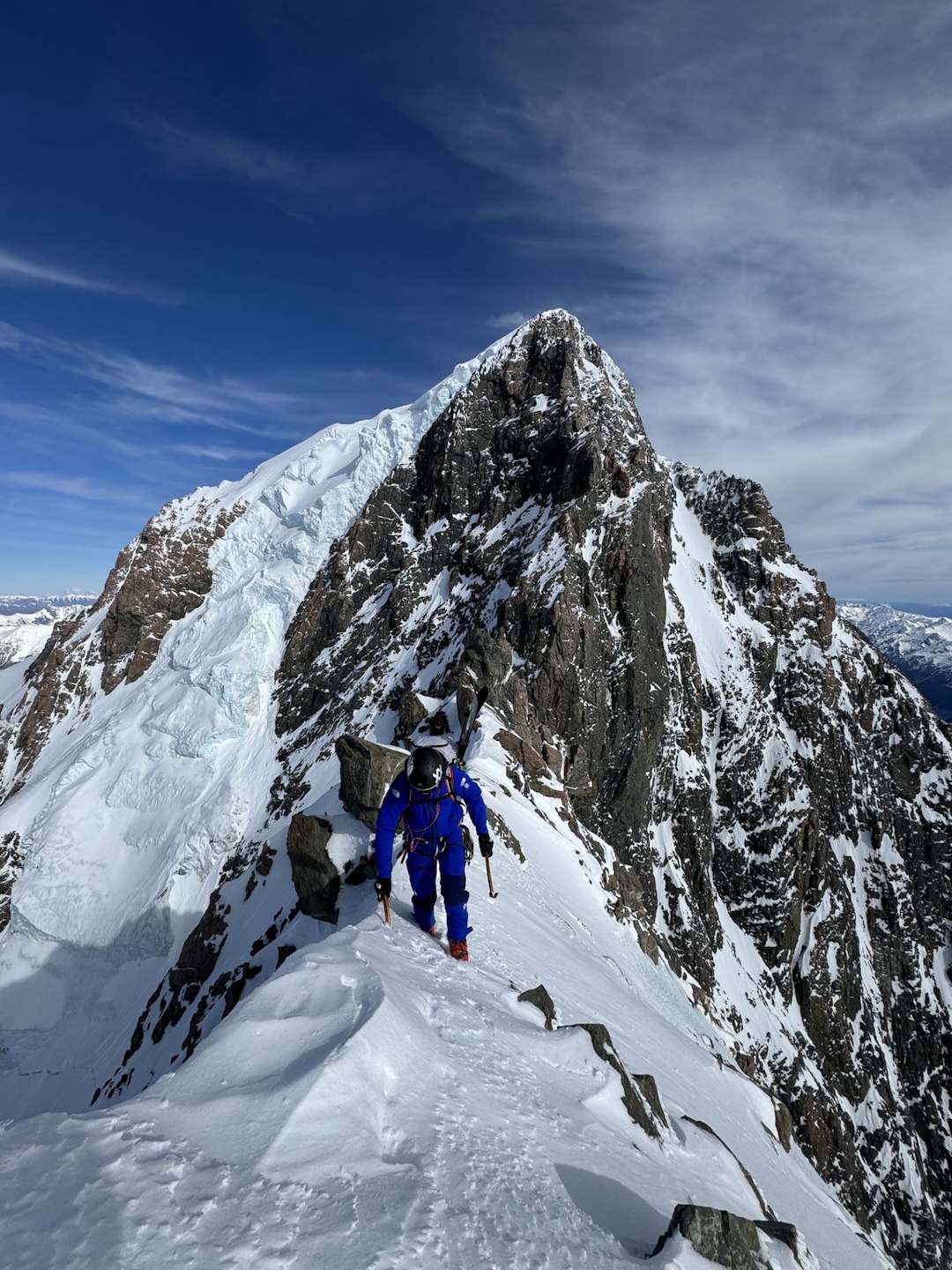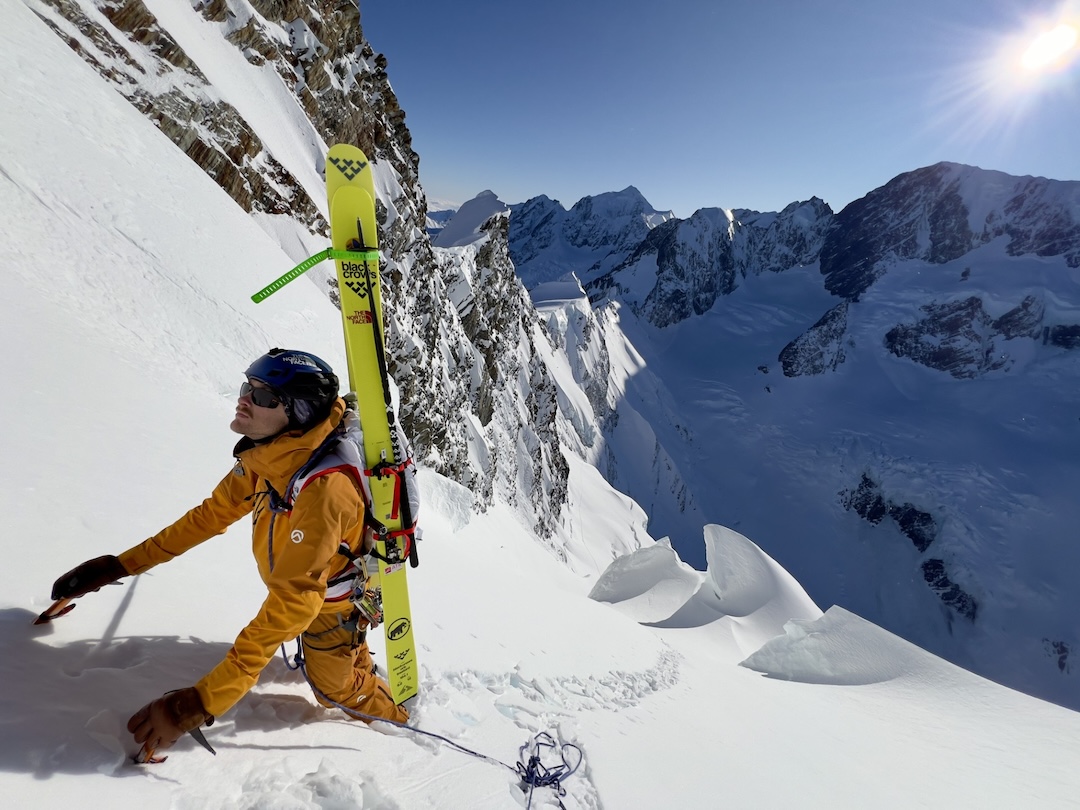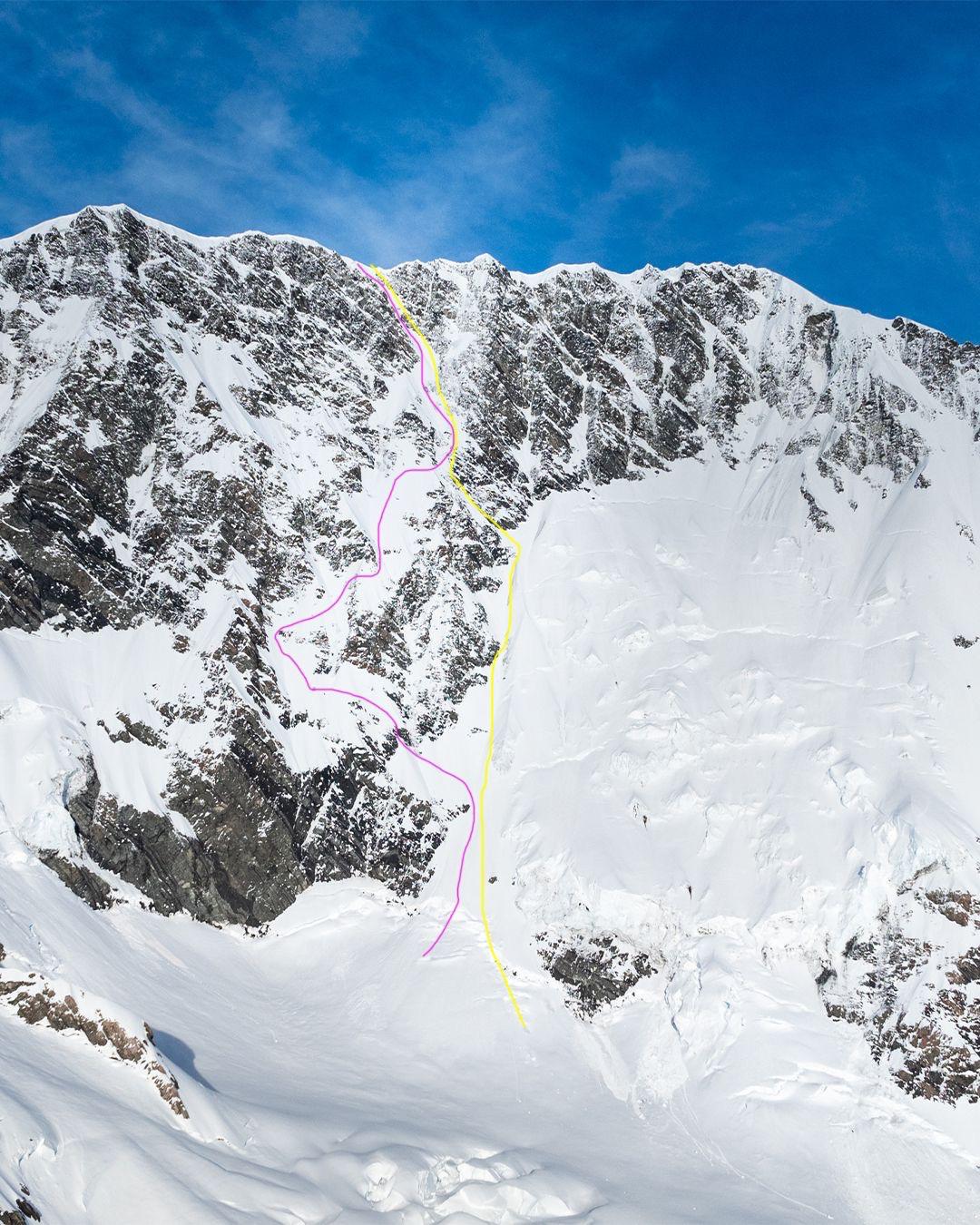2024 Alpine Summary
New Zealand, Southern Alps
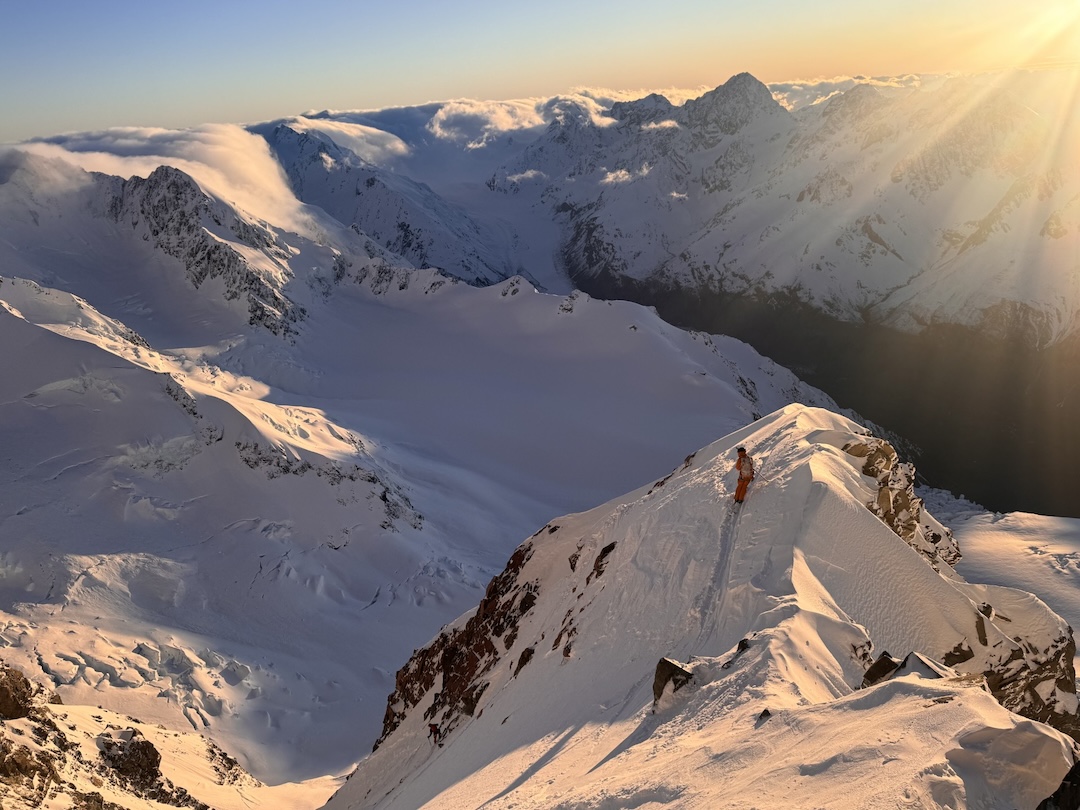
Warm, settled weather in the early summer of 2024 led to a steady stream of activity in the ranges of the lower South Island, with many of the more noteworthy climbs taking place on the lower-elevation peaks of Otago and Fiordland.
In January, Sooji Clarkson made two trips into the Humboldt Mountains to climb new lines on the northeast face of Somnus (2,293m). Clarkson and Penzy Dinsdale ascended the right-hand of the two prominent buttresses on the face, which they named Somnthing (700m, 16/5.8). Clarkson returned with Ruari Macfarlane to climb Battle of the Somne (400m, 19/5.10c) up a smaller rib on the far right edge of the face. Both of these routes are to climbers’ right of the original Northeast Buttress route (Dare, 2014).
Farther north, in the Huxley Range, Joe Collinson and Maria Koo ventured into Canyon Creek, off the Ahuriri Valley, to climb a six-pitch route on the southeast outlier of Point 2,082m. Blue Moon (22/5.11c) follows the crest of the buttress on the southern aspect of the outlier peak.
To close out the summer, Daniel Joll completed his fourth new route on the Airport Wall, near Milford Sound, since making the first ascent of the wall in 2020; this was the second new route on the wall for Joll and Llewellyn Murdoch climbed in as many years. Con Air (295m, 26/5.12c) starts slightly left of Dreamliner (Joll-Mangan, 2021) and Adventure Tourism (Joll-Murdoch, 2023) and climbs eight new pitches before finishing up the final three pitches of Dreamliner.
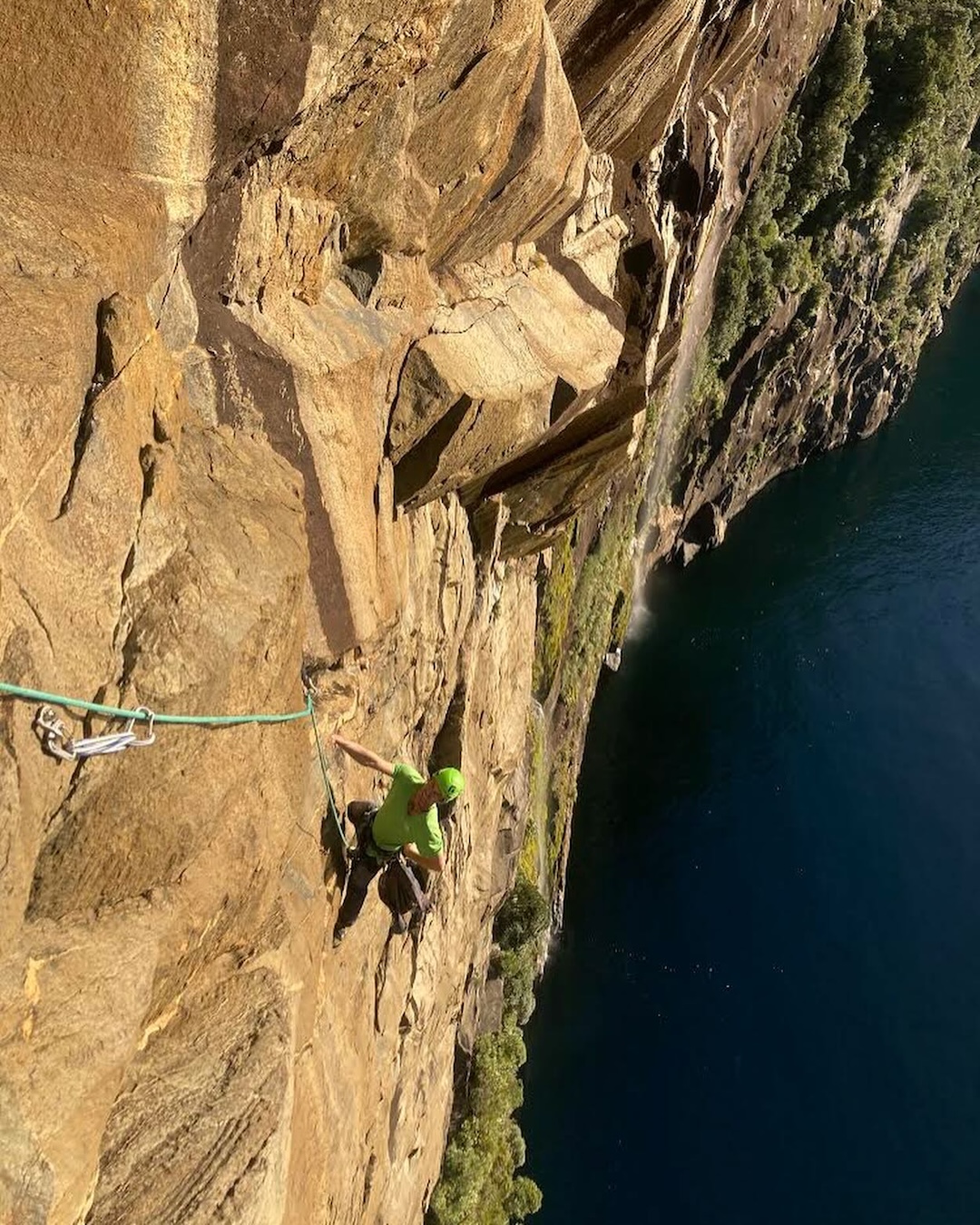
In July, Murdoch and Jon Seddon made the first ascent of a punchy new line on the left side of the Boaty McBoat Face at Copper Point, near the mouth of Milford Sound. Captain Nemo involves seven pitches of sustained and technical climbing on quality, compact orange granite, with difficulties up to 28/5.13a.
Following a relatively quiet winter, the spring kicked off with a flurry of activity among the higher peaks of the Southern Alps in Aoraki/Mt. Cook and Westland Tai Poutini national parks. On rock, Michael Lehmann and Justin Wimmer climbed a new route on the west face of Lendenfeld Peak (3,194m). The Fiend (125m, 22/5.11c) starts ten meters right of The Mutant (McCartney-McFarlane, 1995) and climbs solid red graywacke sandstone up one of the steepest sections of the wall.
The main highlights of the spring undoubtedly came from the skiing sector, though, with impressive descents on some of the country’s highest peaks.
At the end of September, visiting Canadian skier Christina Lustenberger teamed up with Sam Smoothy to make the first ski descent of Mt. Vancouver (3,309m), north of Aoraki/Mt. Cook. Starting out north along the summit ridge, they descended a steep couloir on the northeast face to the upper Linda Glacier.
Not long after, Smoothy and Will Rowntree made the first descent of nearby Mt. Teichelmann (3,144m) via a line on the east face. The pair then joined Lustenberger and Frenchman Guillaume “Gee” Pierrel to make a rare descent of the Bowie Couloir on the north face of Aoraki/Mt. Cook (3,724m); they skied the face in its entirety, including the upper portion of the Zurbriggen Ridge from the base of the Summit Rocks. Lustenberger and Pierrel, with Ross Hewitt, then skied the Syme Ridge on Mt. Tasman (3,497m).
Lustenberger and Pierrel then embarked on a trio of first descents over a period of four days. They started with Mullet Direct, named in memory of Mike Gardner, on the southeast face of Dixon Peak (3,004m), above the north end of the Grand Plateau; this roughly follows the line of the original southeast face climbing route (Biggs-Duff, 1973). Back on Mt. Vancouver, they skied a line they called Uncle Pete down the steep snow slopes and hanging glacier of the standard east face climbing route (Barley-Forsyth, 1950). Finally, on October 17, they made the first ski descent of the Jones Route (Murray Jones, 1973) on the 1,000m east face of Aoraki/Mt. Cook’s middle peak. They called the ski line Hunter’s Moon.
During the same week, Emily Jones, Petrouchka Steiner-Grierson, Mathias Gruber, and Connie Henderson made a quick second descent of Lustenberger and Pierrel’s line on Dixon before turning their attention to Silberhorn (3,300m). Here, they made the first descent of a line down the skier’s left side of the south face, largely running parallel to the Silberhorn Arête.
Moving to the western side of the Main Divide, Lustenberger, Rowntree, and Smoothy made the first ski descent of Douglas Peak (3,077m). The trio climbed the northeast ridge, then made one rappel from the summit before skiing the east face. They traversed the upper Forrest Ross Glacier to climb the east ridge of Glacier Peak, then descended the west face back to Pioneer Hut.
Returning to the Grand Plateau, Rowntree and Smoothy climbed Mt. Dampier (3,440m) by the south ridge from Green Saddle, en route to making the first ski descent of the peak via the west face. They then traversed out from north to south over Harper Saddle to Empress Hut. After resting for a day at the hut, they climbed and skied a new direct line down the east face of La Perouse (3,078m), making the third ski descent of the face and the second full descent from the summit.
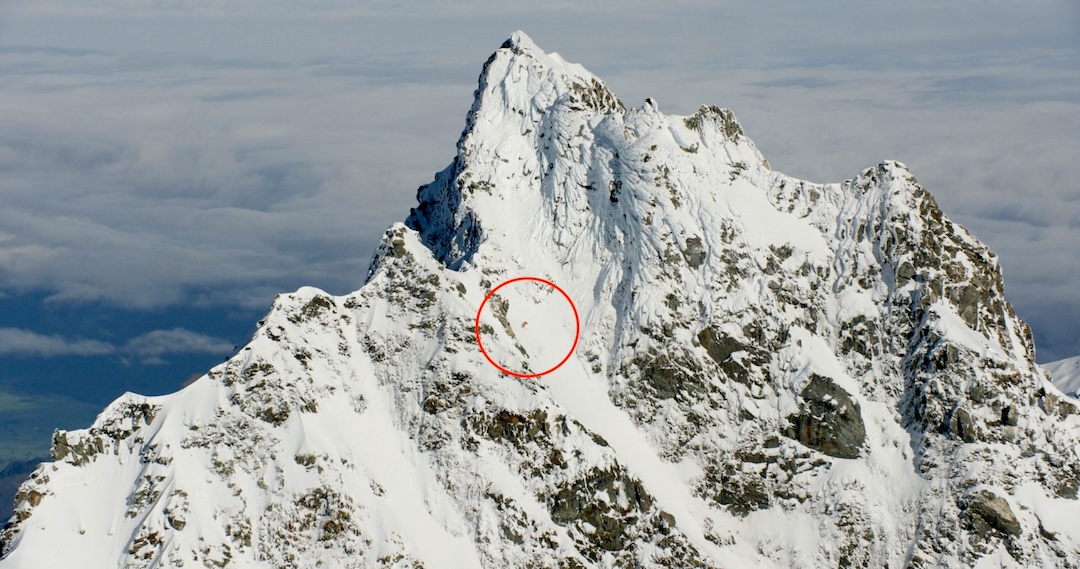
Slightly to the north, Beau Fredlund and Ross Hewitt claimed the first ski descent of the aesthetic Central Spur on the Spencer (west) Face of Elie De Beaumont (3,109m)—nicknamed Dragon’s Back by the pair.
The spring wasn’t all about skiing. In November, in the Darran Mountains, Daniel Joll and Tanja de Wilde made three trips to the granite Charismatic Wall of Point 1,655m. Their DJ Wild (24/5.12a) follows the first seven pitches of Uprising (2018) before continuing straight up where Uprising moves right. Joll and de Wilde added 16 pitches, with a mix of technical face climbing, overhanging cracks, and friction slabs.
—Ben Dare, New Zealand




